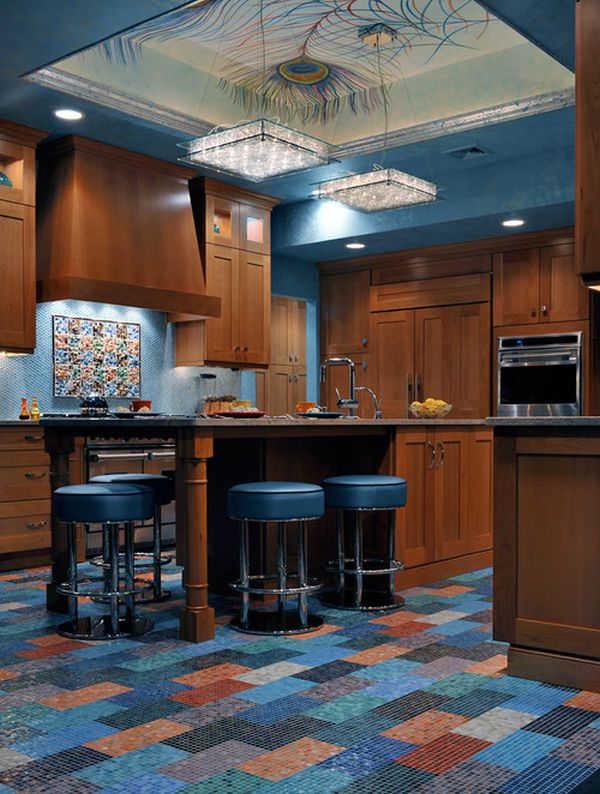The walls at home can stay as new for years, it will all depend on how you take care of them. Discover some tricks that will help your walls stay young longer.

FRESH PAINT, FOR HOW LONG?

After a wall is painted, it can take up to 4 weeks to dry completely, so avoid any kind of cleaning during this period.
HOW TO PREVENT DAMPNESS ON THE WALLS?

The answer is very simple, it is necessary to let fresh air circulate in this place, so that no damp spots form, causing the paint to peel and fall little by little. If it is not possible to ventilate the room, a dehumidifier should be installed to remove excess moisture.
WHEN TO CLEAN THE WALLS?

As soon as they notice that the wall has a stain they should clean it as soon as possible, because the longer they leave the stain uncleaned, the more difficult it will be to remove. Keeping dust off the walls by vacuuming them with a special accessory or running a Swiffer is a good way to avoid unwanted stains, as the dust gets into the pores of the paint and into the greasy fingerprints that remain whenever you put a hand on the wall. . As soon as you see a stain, even a small fingerprint, clean it right away. If it is a habit to smoke at home, you should clean the walls even more often to avoid stains caused by tobacco.
HOW TO CLEAN STAINS FROM WALLS?

To start with, take a container with a little water, a white cloth or a non-abrasive sponge or even a paper towel, and rub the damp cloth over the stain gently. If they cannot remove the stain, then put a little water and a few drops of dishwashing detergent in a container, dissolve it, dip the sponge in the solution, remove the excess water and pass it over the stain again. If the stain on the wall still persists, they should apply a few drops of dish soap directly onto the damp cloth or sponge and try to clean the stain again. If you can’t remove the stain then try, as a last attempt, directly putting some soapy soaps on the stain. If they still can’t, they will have to use a solvent; however, when buying a solvent, ask at the paint store how to apply it, as you can modify the surface of the paint, leaving you to notice the difference later. After the stain has been cleaned with the solvent, wipe the spot with a damp cloth in cold water and clean the solvent well, because if it is left too long it can damage the paintwork. You can also make a solvent at home if you add 1 tablespoon of ammonia to 1.5L of cold water. However, before putting it on the stain, always try the solvent on a small surface that will not be noticed, in case it is too abrasive.
HOW TO TREAT DIFFERENT TYPES OF STAINS?

There are basically 2 types of stains that usually appear on walls: grease and moisture. Usually a cloth dampened in cold water can remove stains from crushed insects, wine, pencils, etc; however, grease stains such as lipstick, crayons, grease, food stains with grease, are not exactly good candidates for simple water, in these cases it will be necessary to use dishwashing detergent to be able to remove them in their entirety.
AND STAINS THAT DON’T COME OFF?
What makes a stain permanent on a painted wall is exactly what makes the paint permanent on the same wall as well. So, try until you succeed: start with water, move to dishwashing liquid and even more radical options such as the use of solvent or the use of an abrasive sponge. However, when they choose to use a more abrasive cleaning method, they will hardly be able to do it without having to repaint the area. But, before repainting the place with the right paint, first apply a stain anti-stain primer so that the stain does not reappear.
AND MARKS OR SCRATCHES CAUSED BY THE FEET OF CHAIRS AND PAINTINGS?

For these types of situations, the ideal is to avoid them, placing protectors on the feet and on the back of the chairs, hanging the paintings on two supports instead of just one will prevent the painting from moving and marking the wall. For marks that already exist on the walls, you can always touch up with paint leftovers from the previous painting. However, keep these touches to a minimum and as smooth as possible so they don’t stain the walls. This should be done with a small sponge or a very small brush so you don’t fall into the temptation to paint a surface larger than the stain itself, something you’ll notice.
WHAT IS THE BEST AND MOST RESISTANT PAINT TO CLEAN?

The brighter the paint, the more latex polymer it contains. The smoother the surface, the more resistant it becomes to water marks and agglomerates of dust and grease, as there will be less roughness. So, if you opt for a smooth finish, especially in the kitchen and in places with more movement in the house, it is the best way to keep stains away from the walls for longer. However, keep in mind that the more latex polymer you have, the more reflective and shiny the paint becomes.
HOW TO AVOID FUTURE PROBLEMS WITH PAINTING AS MUCH AS POSSIBLE?

They should start at the beginning: the wall must be prepared to the maximum detail before being painted. Don’t be in a hurry to paint; the walls must be very clean as there are always greasy fingerprints around the switches, cobwebs on the corners, soap on the bathroom walls, smoke and grease stains on the kitchen walls, etc. Painting does not make this type of marks disappear, so in these places, if they are not well cleaned and an anti-stain primer applied, it is certain that the painting will not be done well. Furthermore, it is necessary to use good and suitable materials, such as good brushes and good rollers; for this they should always ask the person of the place where they buy them for advice, which must also be a specialized place. Otherwise they will risk finding fibers from brushes or roller embedded in the paint.










